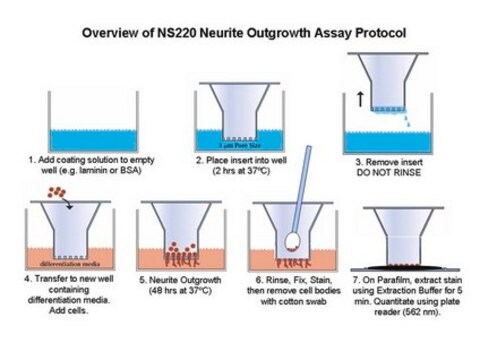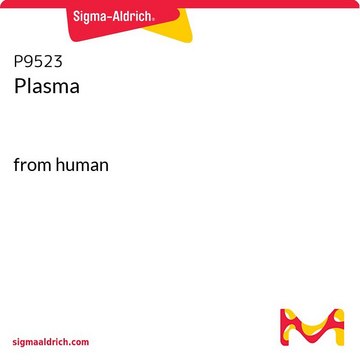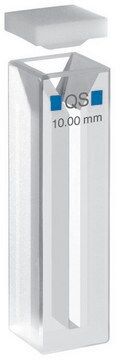NS225
Neurite Outgrowth Assay Kit (1 µm)
The NS225 Neurite Outgrowth Assay Kit (1 μm) is based on the use of Millicell cell culture inserts (chambers) containing a permeable membrane with 1 μm pores at the base.
Synonyme(s) :
Neurite growth assay
About This Item
Produits recommandés
Niveau de qualité
Réactivité de l'espèce (prédite par homologie)
all
Fabricant/nom de marque
Chemicon®
Technique(s)
cell based assay: suitable
Méthode de détection
colorimetric
Conditions d'expédition
wet ice
Description générale
Application
Composants
Neurite Stain Solution: (Part No. 90242) One 20 mL bottle.
Neurite Stain Extraction Buffer: (Part No. 90243) One 20 mL bottle.
Neurite Outgrowth Assay Plate: (Part No. 2007255) Two 24-well plates.
Cotton Swabs: (Part No. 10202) 50 swabs.
Forceps: (Part No. 10203) One each.
Stockage et stabilité
Informations légales
Clause de non-responsabilité
Mention d'avertissement
Danger
Mentions de danger
Conseils de prudence
Classification des risques
Eye Irrit. 2 - Flam. Liq. 2
Code de la classe de stockage
3 - Flammable liquids
Certificats d'analyse (COA)
Recherchez un Certificats d'analyse (COA) en saisissant le numéro de lot du produit. Les numéros de lot figurent sur l'étiquette du produit après les mots "Lot" ou "Batch".
Déjà en possession de ce produit ?
Retrouvez la documentation relative aux produits que vous avez récemment achetés dans la Bibliothèque de documents.
Articles
Optimized cell based neurite outgrowth assays and reagents to study neuron function and development.
Optimized cell based neurite outgrowth assays and reagents to study neuron function and development.
Notre équipe de scientifiques dispose d'une expérience dans tous les secteurs de la recherche, notamment en sciences de la vie, science des matériaux, synthèse chimique, chromatographie, analyse et dans de nombreux autres domaines..
Contacter notre Service technique










